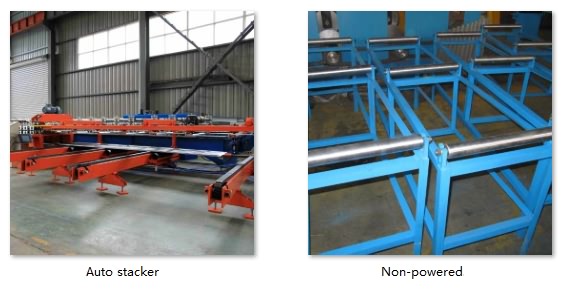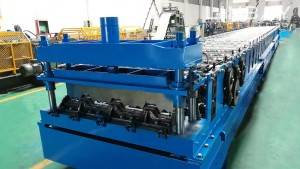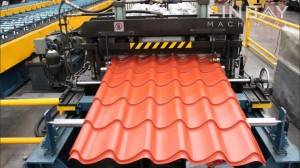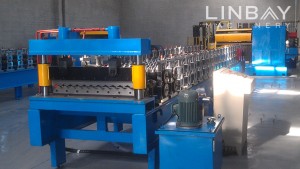Profile

The W-beam guardrail is a crucial safety feature in transportation infrastructure projects such as highways, expressways, and bridges. Its name comes from its distinctive "W" shape, which features dual peaks. Typically manufactured from galvanized or hot-rolled steel, the W-beam guardrail ranges in thickness from 2 to 4mm.
A standard W-beam section spans 4 meters in length and features pre-punched holes at both ends for easy installation. To accommodate varying customer needs for production speed and floor space, we provide customizable hole-punching solutions that seamlessly integrate into the primary forming machine production line.
Real case-Main Technical Parameters
Flow chart: Hydraulic decoiler--Leveler--Servo feeder--Hydraulic punch--Pre cut--Platform--Guiding--Roll former--Out table

1.Line speed: 0-12m/min, adjustable
2.Suitable material:Hot rolled steel, cold rolled steel
3.Material thickness: 2-4mm
4.Roll forming machine: Cast-iron structure and universal joint
5.Driving system: Gearbox driving system with universal joint cardan shaft.
6.Cutting system: Cut before roll forming, roll former doesn’t stop when cutting.
7.PLC cabinet: Siemens system.
Machinery
1.Decoiler*1
2.Leveler*1
3.Servo feeder*1
4.Hydraulic punch machine*1
5.Hydraulic cutting machine*1
6.Platform*1
7.Roll forming machine*1
8.Out table*2
9.PLC control cabinet*2
10.Hydraulic station*2
11.Spare parts box(Free)*1
Container size: 2x40GP
Real case-Description
Hydraulic decoiler
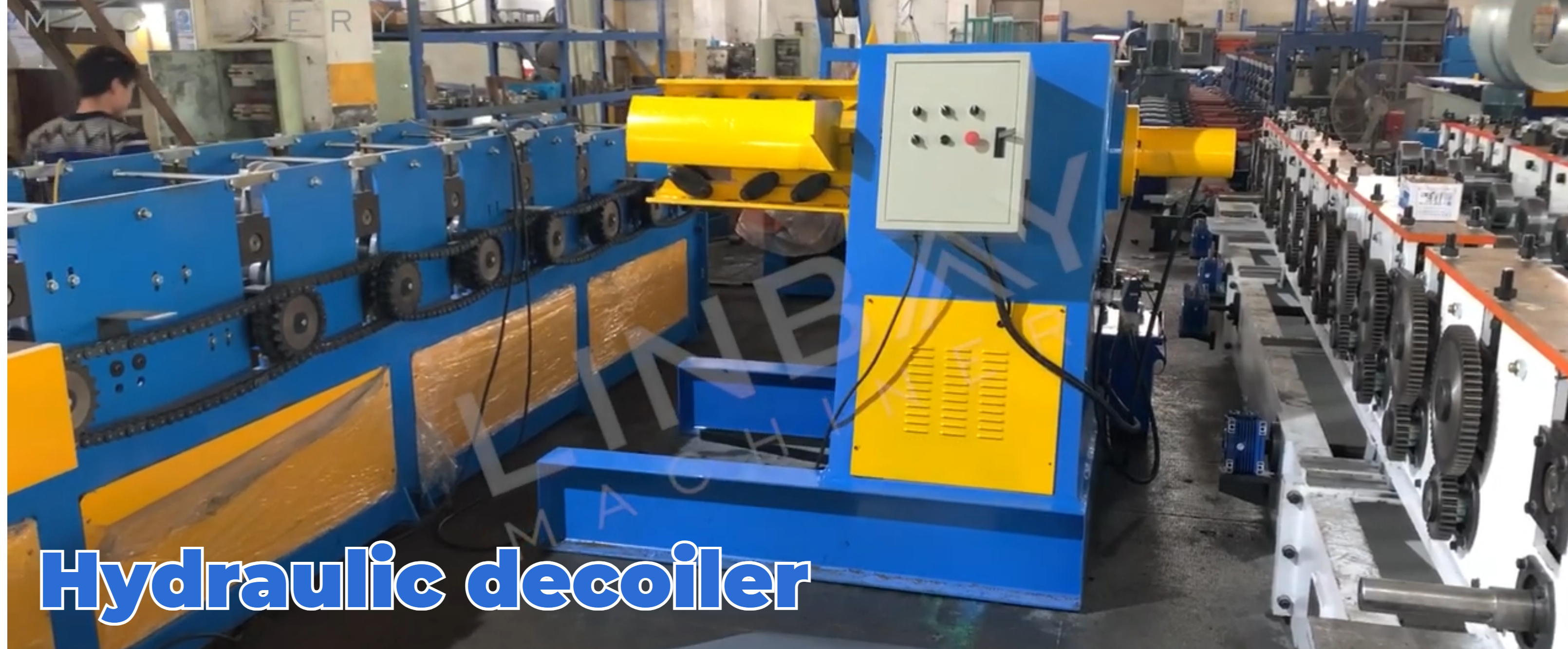
The hydraulic decoiler features two important safety components: the press arm and the outward coil retainer. When replacing coils, the press arm securely holds the coil in place, preventing it from springing open due to internal tension. Simultaneously, the outward coil retainer ensures the coil remains stable during the uncoiling process.
The decoiler's core expansion device is adjustable, capable of contracting or expanding to accommodate coil inner diameters ranging from 460mm to 520mm.
Leveler

The leveler is essential for flattening the coil and maintaining consistent thickness. Utilizing a separate leveler ensures optimal performance.
We also offer a combined decoiler and leveler (2-in-1 decoiler) to save space and costs. This integrated solution simplifies alignment, feeding, installation, and debugging.
Servo Feeder

Equipped with a servo motor, the feeder operates with virtually no start-stop delays, allowing for precise control of coil feed length for accurate punching. Internally, pneumatic feeding protects the coil surface from abrasion.
Hydraulic Punch & Pre-cut Hydraulic Cutting Machine

To enhance efficiency and cost-effectiveness, the punching process is handled by two hydraulic stations (two molds).
The first major station can punch 16 holes at a time. The holes punched at the second station appear only once on each beam, making the smaller station a more efficient solution.
Pre-cutting before roll forming ensures uninterrupted operation of the roll forming machine, thereby increasing production speed. Additionally, this solution minimizes steel coil wastage.
Guiding
Guiding rollers positioned before the roll forming machine ensure alignment between the steel coil and the machine, preventing coil distortion during the forming process.
Roll Forming machine

This roll forming machine features a cast-iron structure, with universal shafts connecting the forming rollers and gearboxes. The steel coil passes through a total of 12 forming stations, undergoing deformation until it conforms to the W-beam shape specified in the customer's drawings.
The surface of the forming rollers is chrome-plated to protect them and extend their lifespan.
Optional: Auto stacker

At the end of the production line, using an auto stacker can reduce manual labor costs by approximately two workers. Additionally, due to the weight of a 4-meter-long W-beam, manual handling poses safety risks.
An auto stacker is a common and efficient option in roll forming production lines to enhance both efficiency and safety, with pricing based on length. Different profiles necessitate distinct stacking methods. In this production line, a 4-meter-long auto stacker is equipped with three suction cups tailored for W-shaped profiles. These suction cups securely grasp the W beam and delicately place it onto the conveyor for orderly stacking, facilitating transportation.
Pre-cut solution VS Post-cut solution
Production Speed: Typically, guardrail beams are 4 meters long. Pre-cutting operates at a speed of 12 meters per minute, enabling production of 180 beams per hour. Post-cutting, running at 6 meters per minute, yields 90 beams per hour.
Cutting Wastage: During cutting, the pre-cut solution generates zero waste or loss. In contrast, the post-cut solution produces waste of 18-20mm per cut, as per design specifications.
Line layout length: In the pre-cut solution, a transfer platform is necessary after cutting, which may lead to a slightly longer production line layout compared to the post-cut solution.
Minimum Length:In the pre-cut solution, there is a requirement for a minimum cutting length to ensure that the steel coil spans at least three sets of forming rollers, providing sufficient friction to propel it forward. In contrast, the post-cut solution does not have a minimum cutting length restriction since the roll forming machine is continuously fed with steel coil.
However, given that W beams typically measure around 4 meters in length, which exceeds the minimum length requirement, the choice between pre-cut and post-cut solutions becomes less critical for this roll forming machine designed for W beams.
Kind Advice: We recommend that clients select a production line based on their specific production quantity needs. For suppliers of guardrail beam profiles, the pre-cut solution is recommended. Despite its slightly higher cost compared to the post-cut solution, its enhanced output capabilities can swiftly offset any cost difference.
If you are procuring for a traffic construction project, the post-cut solution is more suitable. It occupies less space and is generally available at a slightly lower cost.
1. Decoiler
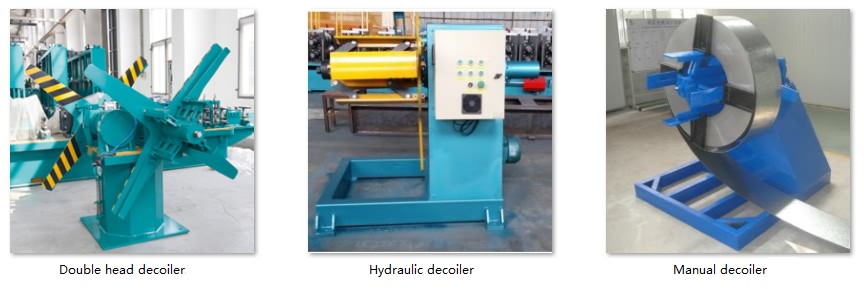
2. Feeding
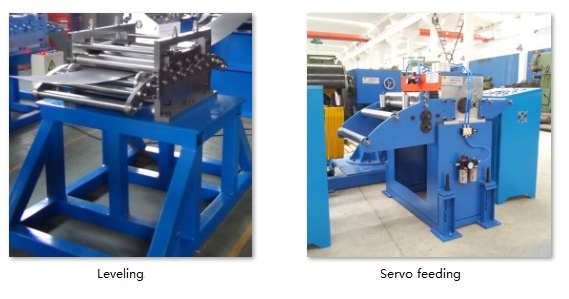
3.Punching
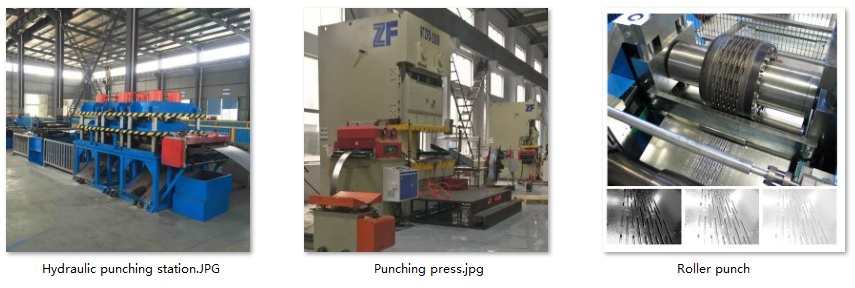
4. Roll forming stands

5. Driving system

6. Cutting system

Others

Out table
